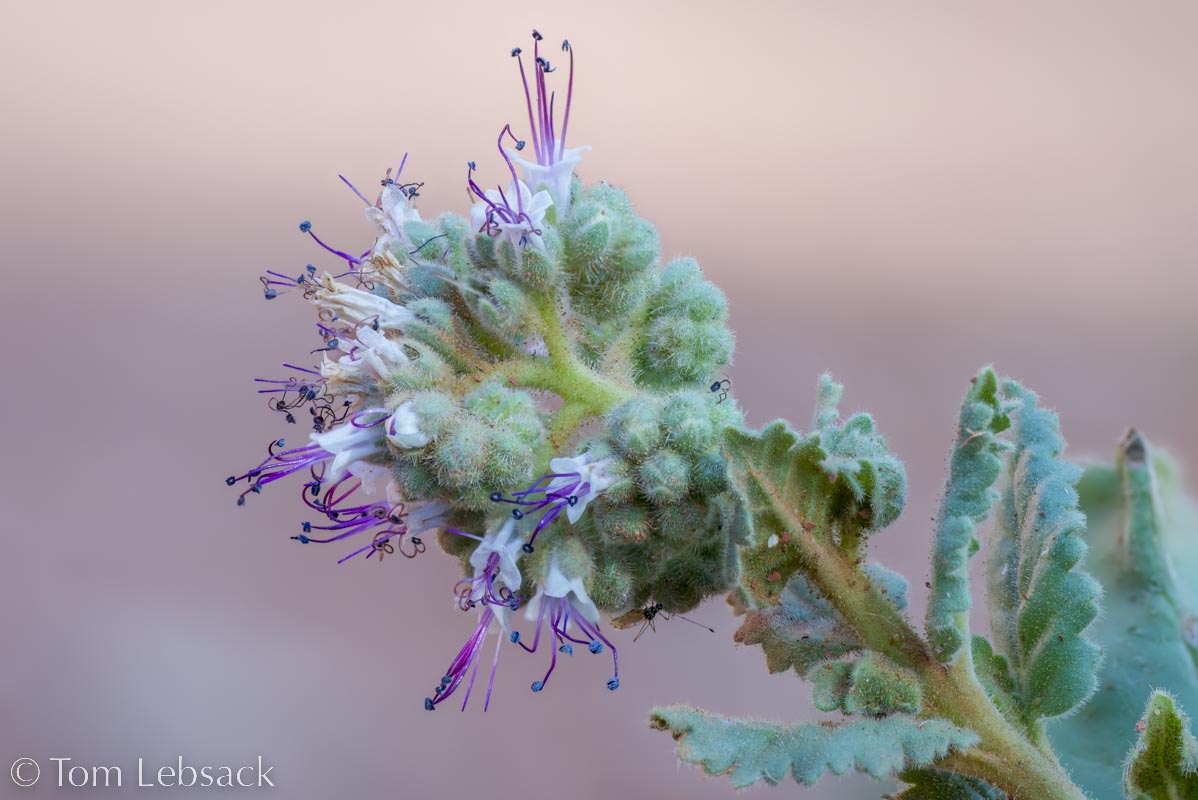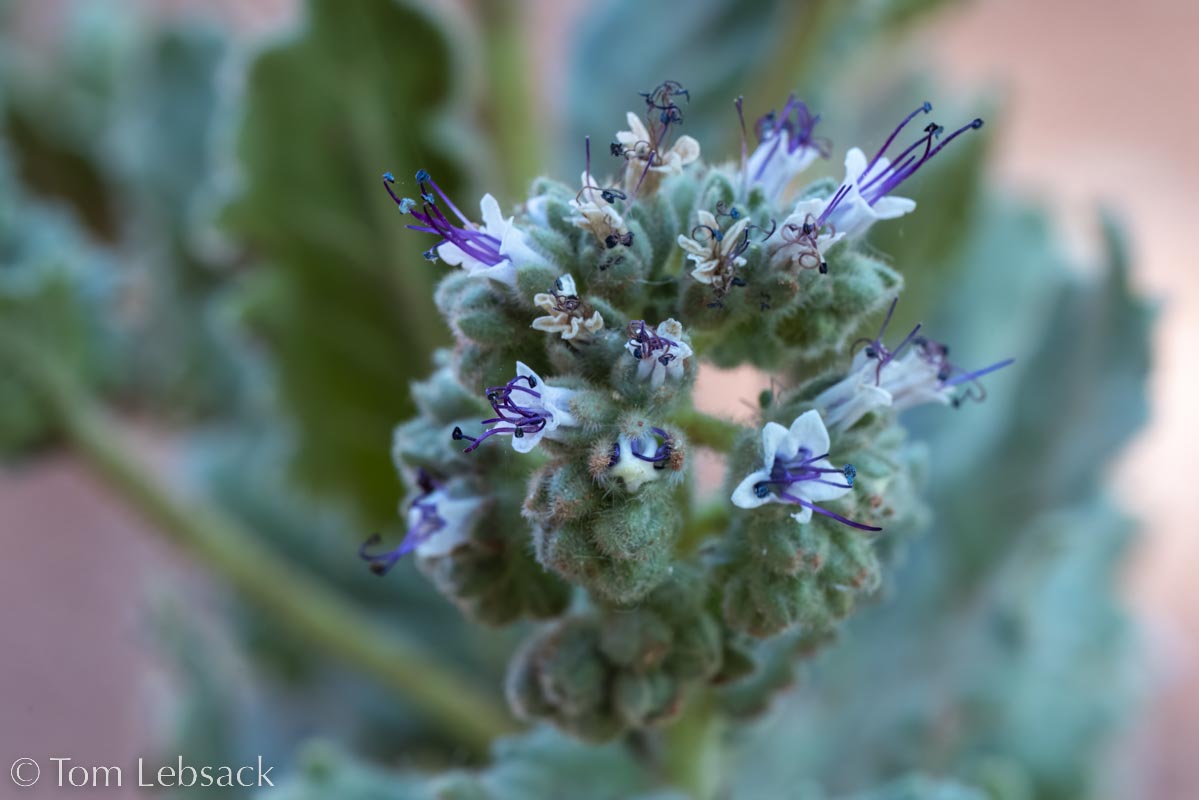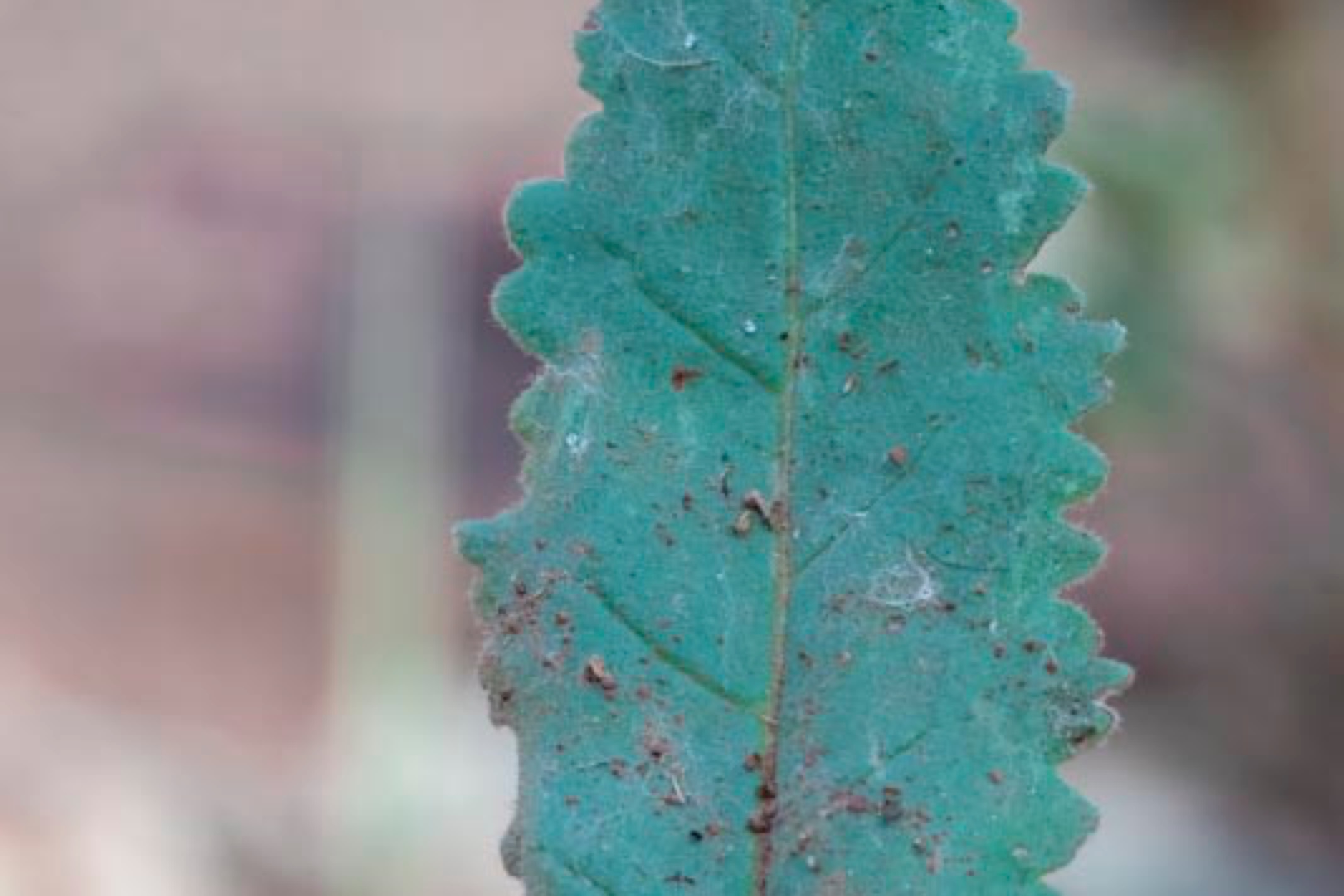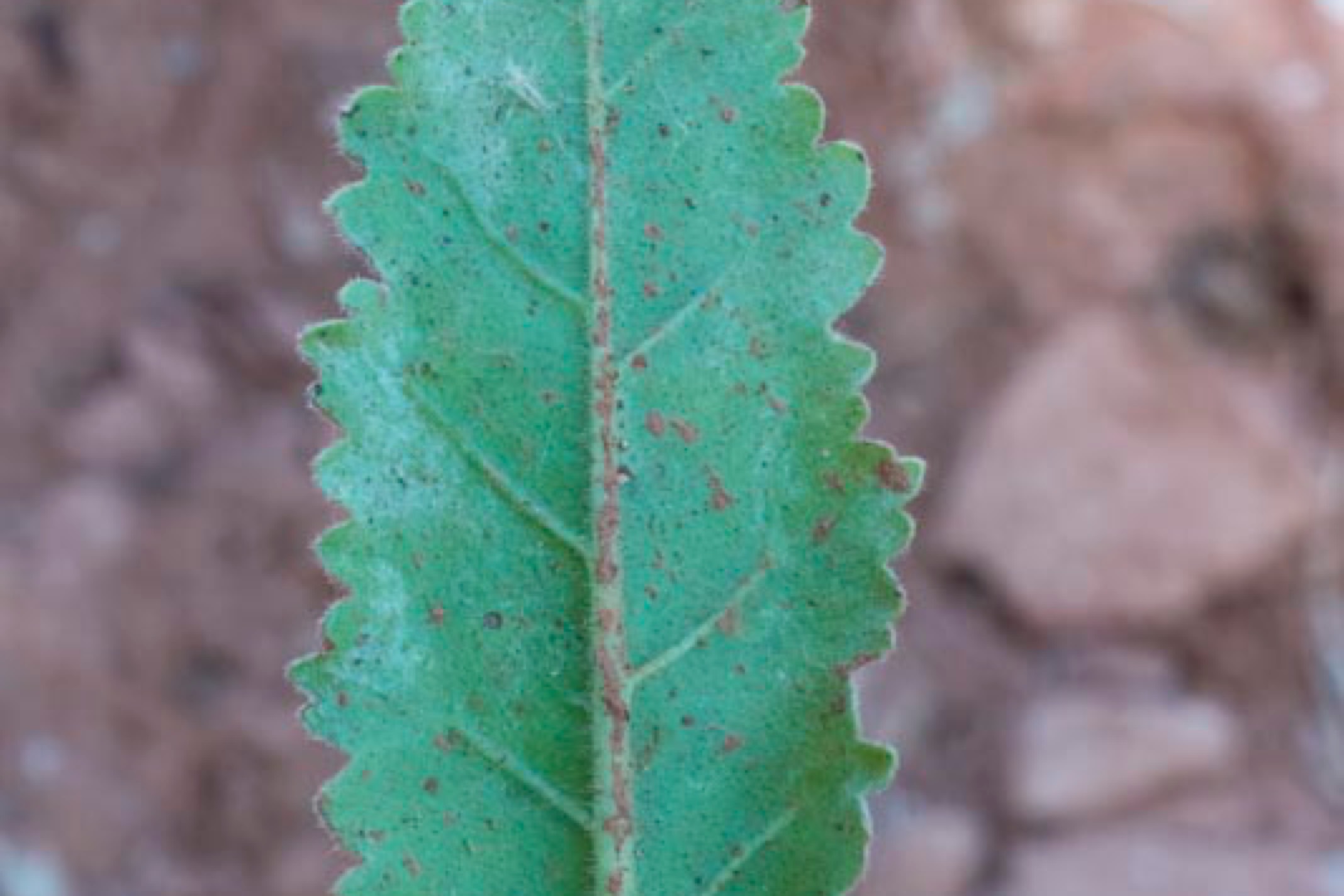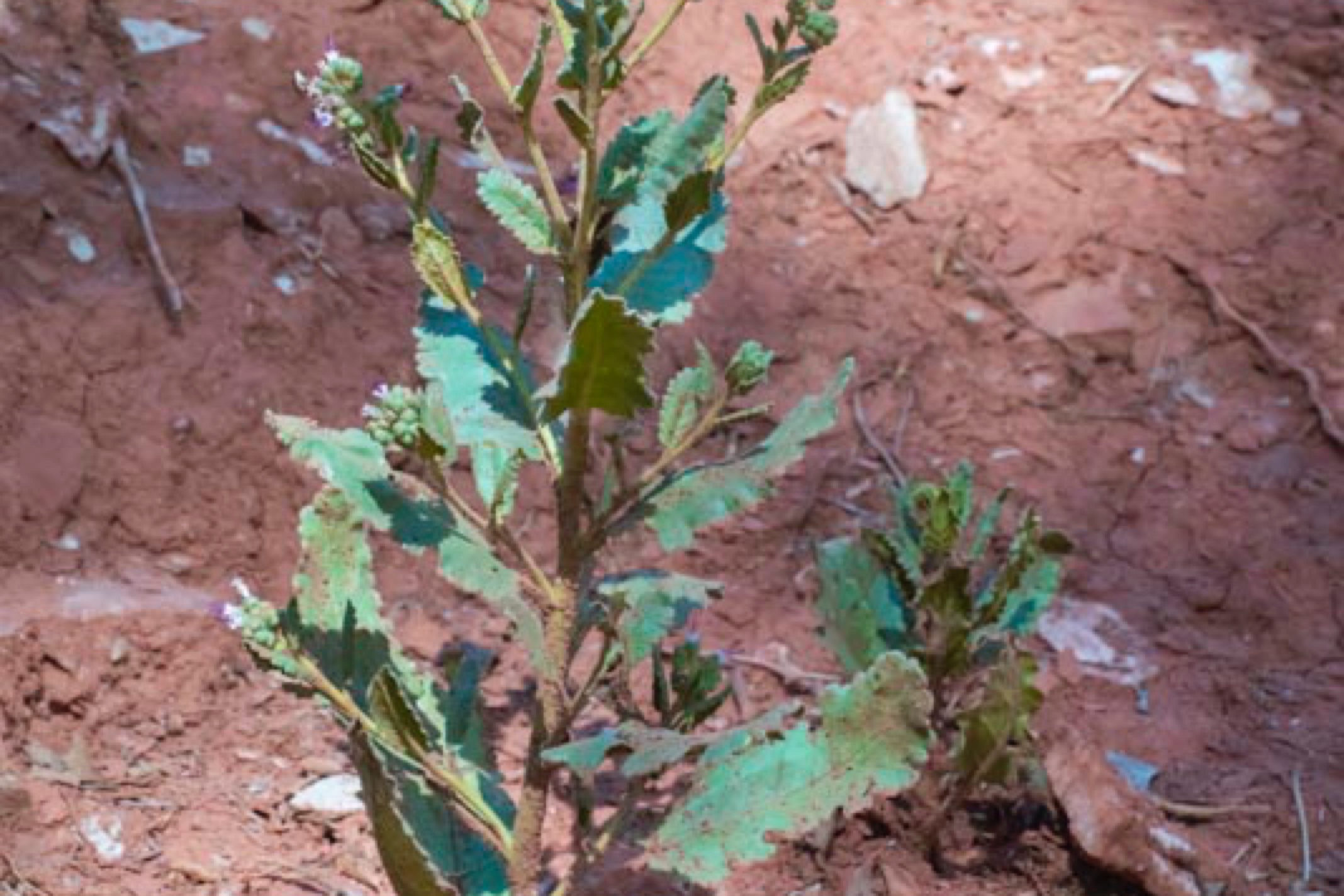Texas Wildbuds
Phacelia integrifolia
(Gypsum Phacelia)
| Scientific Name | Phacelia integrifolia | USDA PLANTS Symbol | PHIN |
| Common Name | Gypsum Phacelia | ITIS Taxonomic Serial No. | 504272 |
| Family | Hydrophyllaceae (Waterleaf) | SEINet Reference |
Click Here |
| Description | Habitat: Sandy, rocky, gypseous or calcareous soils in desert scrub and wooded areas. Plant: Stout, leafy, erect annual or biennial, stems 6 to 24 inches tall with densely hairy/sticky foliage. Leaves: Alternate stem leaves, oblong to narrowly-ovate, 3/4 to 2-3/4 inches long and 1/4 to 3/4-inch wide; margins crenate to shallowly-pinnatifid; surfaces with fine, glandular hairs; lower leaves petiolate and upper leaves usually sessile or nearly so. Inflorescence: Many small bell-shaped blossoms grouped together in coiled (scorpioid) clusters, each corolla less than 1/2-inch across with 5 overlapping blue to purplish or white lobes; protruding purple filaments with blue anthers; 5 oblanceolate to spatulate sepals with gland-tipped and non-glandular hairs. Bloom Period: March to August. References: "Manual of the Vascular Plants of Texas" by Correll and Johnston, American Southwest and SEINet Note: Experts seem to agree that Phacelia species are difficult to differentiate. Foliage is usually not determinant, blossoms and seed being more reliable. These IDs should be considered in that light. |
BONAP Distribution Map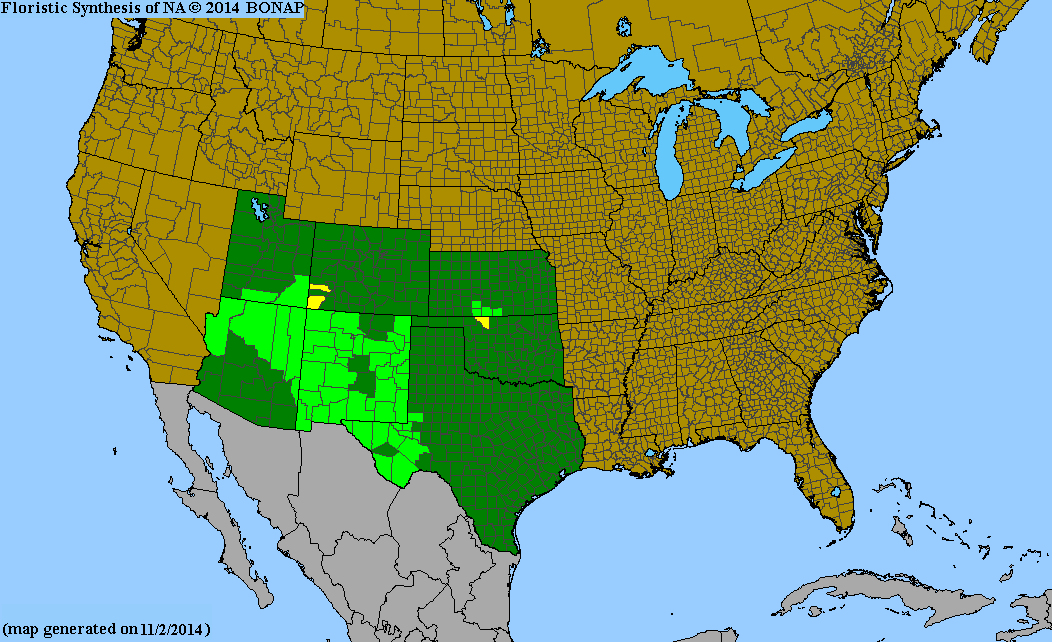 Map Color Key Map Color Key | Texas Status: Native |
Banner photo of Castilleja indivisa and Lupinus ssp. taken along FM 1323 north of Johnson City, Blanco County
© Tom Lebsack 2025
Every attempt is made to provide accurate, up-to-date, and relevant information, but the completeness or accuracy of any information presented on this website cannot be guaranteed. I use authoritative references to insure high standards of accuracy and review and update the information frequently.
